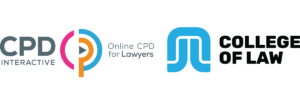CLE in a changing legal world: Jordan Furlong at CLEAA
CPD Interactive were pleased to sponsor the keynote speaker Jordan Furlong at this year’s CLEAA (Continuing Legal Education Association of Australia) conference at Brisbane’s College of Law.
Jordan is an Ottawa based lawyer, consultant and legal industry analyst and is an industry expert on the impact of the future of the changing legal marketplace. He is a partner with global consulting firm Edge International and has been named one of the ’25 most influential lawyers’ by Canadian Lawyer Magazine.
Jordan’s keynote address identified major changes in legal practice and the impact of those changes on CLE. Whilst Jordan’s experience is in the international marketplace, the issues identified resonate for Australian law firms and CLE providers.
3 key areas were identified:-
- The New Legal Marketplace;
- Key legal trends and their impact on CLE;
- The future of CLE which Jordan called “Transformation”.
For organisations dealing with corporate clients, those clients have had “slashed budgets” and internal pressures and in turn need lower or predictable prices and risk management. Individual clients are looking for more information but with fewer ‘lawyer’ options.
The immediate impact on law firms is that there is less revenue but more competition for clients. Jordan spoke of a “revolution” in the market and predicted the deeply entrenched conservatism and change resistant culture of law firms will create “casualties”.
So what are the key legal trends and the impact of these on CLE and CLE providers?
- Firstly with the prevalence of online legal knowledge the opportunity exists for CLE to be redirected toward business skill and practice development – an area he identifies as being neglected by CLE providers.
- With the dramatic increase of “non-lawyers” servicing clients there are fewer lawyers in the CLE market place. The opportunity exists to extend CLE to these service providers.
- With reductions to in house CLE budgets there are increased pressures on newly inducted lawyers to gain their “sea legs” quickly. There is a new role for a training “bridge” between school and practice. In particular Jordan highlights the potential roles for law schools to service this need jointly with CLE providers.
- With the developments in online learning, Jordan highlights the opportunities for firms to deliver cheap and flexible CLE online whilst concentrating CLE budgets to premium live CLE content.
Finally, Jordan addressed his theme of “transformation” for the future of the CLE marketplace and challenged the CLE industry to turn the current model around.
He identified a new model of CLE delivery:-
- Reverse the current model by having speakers pay rather than attendees;
- Tap into the expertise of the attendees – why not get them talking at CLE events by having facilitated discussion sessions;
- Capturing and recording those events so these sessions become an ongoing CLE resource;
- Integrating with law schools to bridge the gap between learning and practice.
It seems it is time to re-evaluate and reimagine CLE in a changing legal world and to greet the new challenges as opportunities for growth and change.
